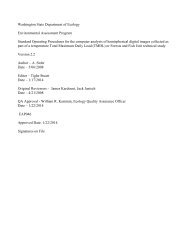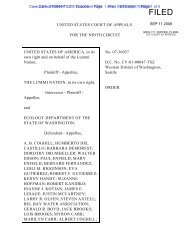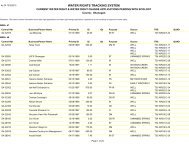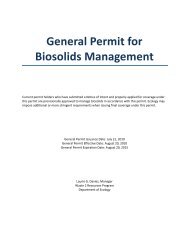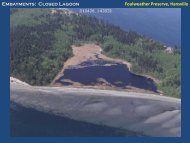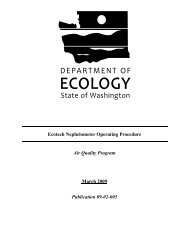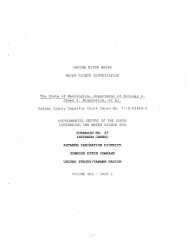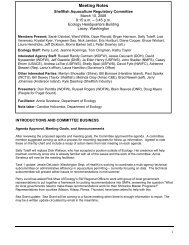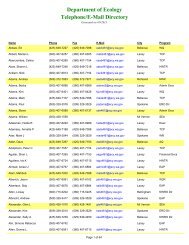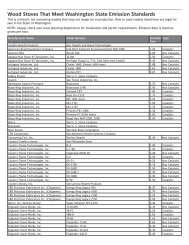WRIA 62 WMP 032305 - Washington State Department of Ecology
WRIA 62 WMP 032305 - Washington State Department of Ecology
WRIA 62 WMP 032305 - Washington State Department of Ecology
You also want an ePaper? Increase the reach of your titles
YUMPU automatically turns print PDFs into web optimized ePapers that Google loves.
March, 2005 -87- 023-1289-003.3040<br />
5.2.2 TMDLs in <strong>Washington</strong><br />
In 1998, <strong>Ecology</strong> signed a Memorandum <strong>of</strong> Agreement with the EPA and agreed to have Total<br />
Maximum Daily Loads in place for over 1500 water quality parameters by 2013.<br />
<strong>Ecology</strong> is required by EPA to include the following elements in a TMDL study (<strong>Ecology</strong>, 2002):<br />
• Technical study identifying the pollutants causing the water quality problem and the<br />
sources <strong>of</strong> these pollutants;<br />
• Waste loads or load allocations for pollutant sources which distribute allowable levels <strong>of</strong><br />
pollutant discharges among contributing sources;<br />
• A margin <strong>of</strong> safety to ensure water quality standards will be met under the worst<br />
conditions likely to be experienced;<br />
• Population growth factor to ensure the allocations will continue to be adequate for more<br />
than the immediate time period;<br />
• A consideration <strong>of</strong> seasonal variation <strong>of</strong> flows and contaminant concentrations (water<br />
quality standards must be met during all seasons <strong>of</strong> the year);<br />
• An implementation strategy to prevent, reduce or clean up excess pollution;<br />
• A follow-up monitoring plan to demonstrate success <strong>of</strong> pollution controls contained in<br />
the implementation plan or the need for additional action;<br />
• An administrative record;<br />
• Reasonable assurances for the success <strong>of</strong> the implementation plan;<br />
• An estimate <strong>of</strong> when the waterbody will meet standards; and<br />
• Public involvement at all key decision steps <strong>of</strong> the process.<br />
There are currently no approved TMDLs in <strong>WRIA</strong> <strong>62</strong>. However the following TMDLs are ongoing<br />
in <strong>WRIA</strong> <strong>62</strong> (Figure 4-6 and Table 4-6):<br />
• Temperature for the Pend Oreille River;<br />
• Total dissolved gas (TDG) for the Pend Oreille River; and,<br />
• Temperature in the Colville National Forest.<br />
5.2.3 303(d) Listed Waterbodies in Idaho<br />
The Idaho <strong>Department</strong> <strong>of</strong> Environmental Quality (IDEQ) has a two-part process for monitoring water<br />
quality and determining whether a waterbody fully supports designated and existing beneficial uses.<br />
The first part is the Beneficial Use Reconnaissance Project (BURP), which relies heavily on<br />
biological parameters and aquatic habitat as outlined in the Water Body Assessment Guidance II<br />
(Grafe et al., 2002). Under the BURP project, data is gathered systematically from year to year in<br />
field surveys for macroinvertebrates (aquatic insects), fish, water chemistry, and habitat conditions.<br />
Additional data from outside sources may also be used if relevant. The data is evaluated using the<br />
Water Body Assessment Guidance II (WBAG II) to determine the water body’s status with respect to<br />
meeting water quality standards. Where standards are not met, the water body is added to the 303(d)<br />
list.<br />
<strong>WRIA</strong> <strong>62</strong> <strong>WMP</strong> <strong>032305</strong>



